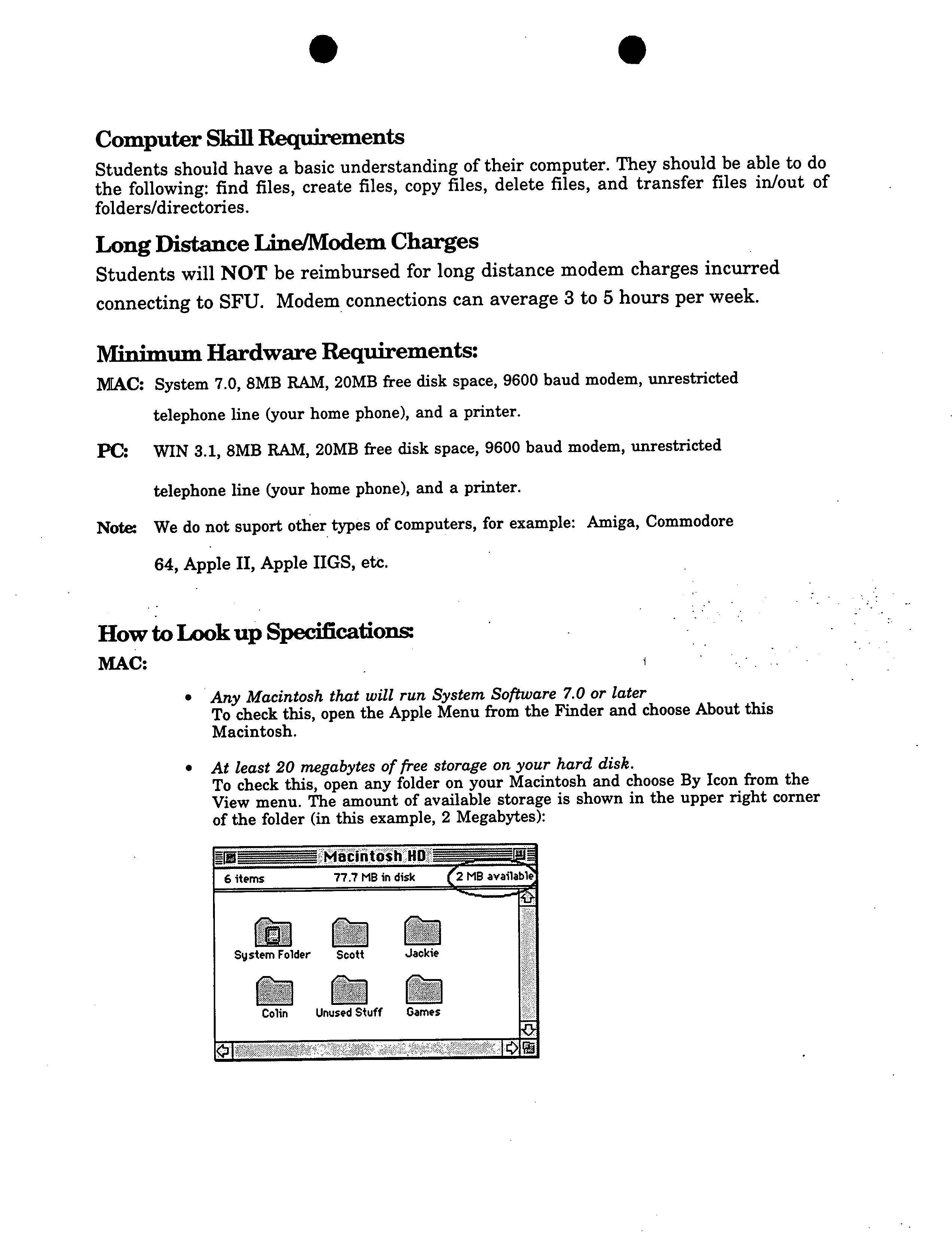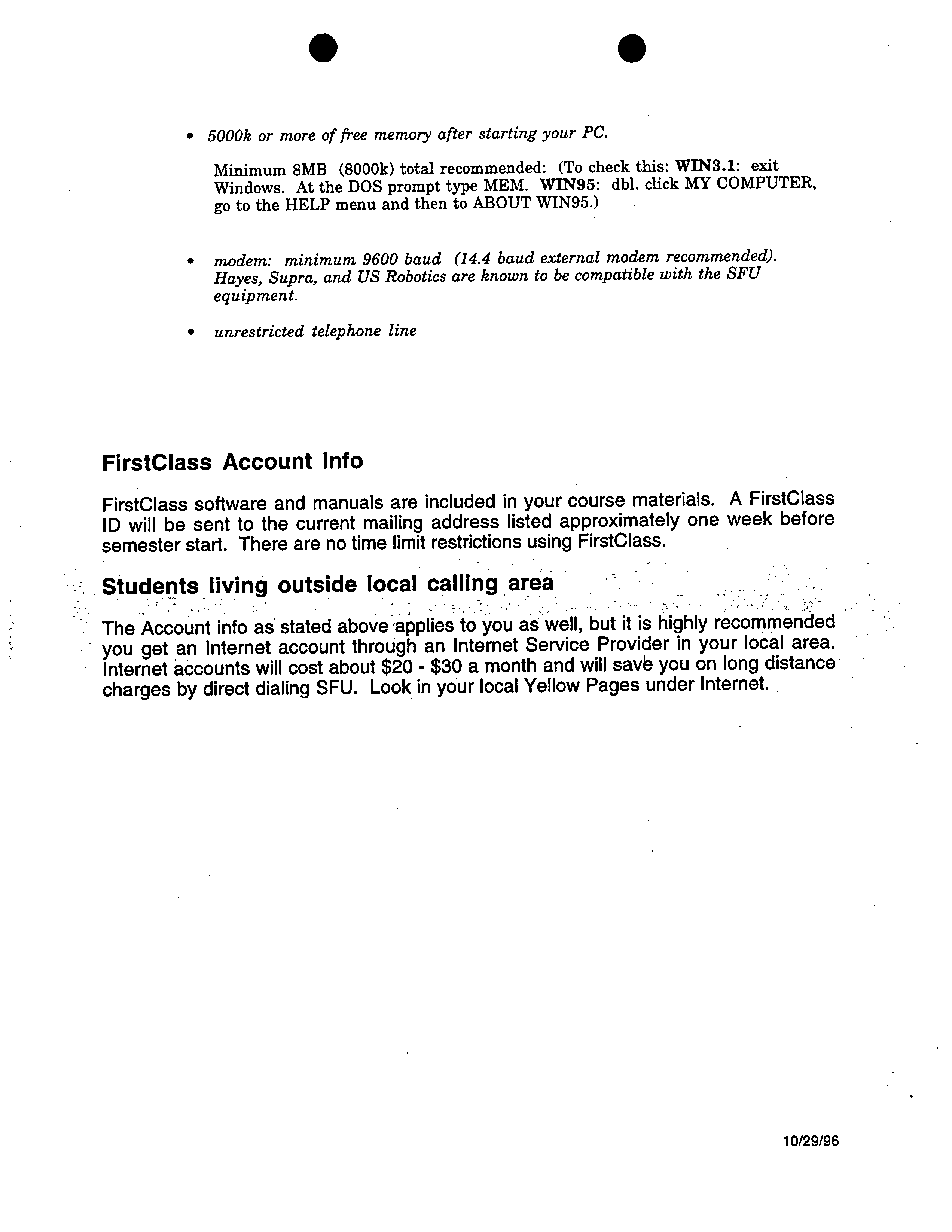Aft, ?
AL
Semester: 97-1
EDUC 465 -4 Children's Literature
Thursdays 16:30 - 20:20
Section: E1.00
PREREQUISITE
60 credit hours
Instructor: M.Zola
Office: 8630mpc
Tel: 291-3259
E-mail: Meguido_Zola@sfu.ca
COURSE DESCRIPTION
Children's literature? Children's literature? Children's literature? Is there, in fact, something that can be
legitimately called children's literature? If there is, is it different from other forms of literature and, if so, why and in
what ways? And does it have its own standards and yardstick of excellence?
Why bring literature and children together, anyway? And which books should we bring to which children. And when?
-- is there, for instance, a way of fitting book to child (or child to book) like the glass slipper to Cinderella. And to what
ends? And in what different ways?
These and related questions are surely at the very centre of the educational enterprise, both at home and at school, from
the earliest years of infancy to the last stages of adolescence. And the answers to these questions speak to our most basic
notions of what it is to be human, what it is to be educated. Or, as Jean-Jacques Rousseau put it in his Confessions: "I do
not know how I learned to read. I only remember my first books and their effect on me; it is from my earliest reading that
I date the unbroken consciousness of my own existence."
OBJECTIVES
• Get in touch with and reflect on your own stories and story experiences through childhood and adolescence.
• Ponder wether there is, in fact, something that can legitimately be called 'children's literature'.
• Learn to survey children's literature through a study of genre; and examine some major genres - e.g., folk & fairy tale,
the picture book, verse & poetry, the novel, etc.
• Learn to look at children's books according to their fit to children's stages and sequences of development.
• Learn to examine children's books through their themes and issues.
• Critically examine why and how children and books should be brought together.
• Learn about story and storytelling.
• Learn about reading and reading aloud.
REQUIREMENTS
The course will comprise a range and variety of learning experiences. These include: individual study, research, and
field-work with children; focussed practice of instructional strategies and procedures, with peer review and feedback;
small group and whole-class discussion, projects, and presentations; lectures, workshops, and demonstrations.
Course Requirements comprise the following:
• Regular class attendance and participation ?
* Completion of assignments
• Completion of Readings ?
* Demonstration of competency in the fulfillment of selected
assignments.
REQUIRED READINGS
Trelease, Jim. The New Read-Aloud Handbook. Penguin Handbooks, 1995.
Chambers, Aidan. The Reading Environment. Thimble Press, 1991.
Stone, Elizabeth. Black Sheep and Kissing Cousins. Penguin Handbooks.
* A list of supplementary readings will be made available at the first class.
Centre for Distance Educati
?
Faculty of Education
Simon Fraser University
WMC 1300 291.3524
EDUCATION 465-4
CHILDREN'S LITERATURE
The two main purposes of this course are:
1.
To introduce you to a small representative sample of the range of literature
available to children today and to give you an opportunity to explore and
understand children's literature in greater depth, e.g. children's traditional
literature, folk and fairy tale.
2.
To introduce you to ways of bringing children and books together through
such strategies as: reading aloud, and other simple forms of presenting
literature; storytelling and dramatic presentation; setting up and running
independent reading programs.
PREREQUISITE. 60 credit hours.
REQUIRED TEXTS:
Barton, Bob.
Tell Me Another.
Pembroke, 1986.
Bettetheim, Bruno. The Uses of Enchantment: The Meaning and Importance of
Fairy Tales.
Vintage, 1989.
Butler, Dorothy.
Cushla and Her Books.
The Horn Book, 1980.
Chambers, A.
The Reading Environment.
Thimble Press, 1991.
Landsberg, M. Michele Landsberg's Guide to Children's Books.
(2nd ed.)
Penguin Books, 1991.
Trelease, Jim.
The New Read-Aloud Handbook. 4th ed.
Penguin Handbooks, 1995.
OPTIONAL TEXT:
Yolen, Jane. Touch Magic: Fantasy, Faerie & Folklore.
Putnam Pub., 1981.
COURSE REQUIREMENTS:
To complement your professional readings in the Study Guide and the texts,
you will be required to:
• read and annotate a broad range of children's books, according to course
guidelines and in the light of your needs and interests.
• ?
engage in a variety of practical experiences with children; e.g., reading aloud,
storytelling, book talks and discussions.
There are four assignment submissions each worth 20% and a final exam worth
20% of the final grade.
SUPPIElIENTARY FEES:
?
Course Materials & Service Fee $30
Deposit for Additional Materials $20
02/21/96
Centre for Distance
Educate
?
Faculty of Education
Simon Fraser University
WMC 1300
?
291-3524
EDUCATION 485-8
DESIGNS FOR LEARNING: WRITING
The course is designed to help students become better teachers of writing. Students
will be involved in four aspects of teaching writing: teacher as writer, teacher as
teacher of writing skills, teacher as researcher, teacher as developer of curriculum.
Techniques for providing effective writing experiences will be studied, demonstrated
and practised. Students will observe, use and evaluate these techniques. Course
content: Teacher as Writer - writing skills, audience, purpose, writing process, self-
evaluation. Teaching writing - research, skill acquisition, self-disclosure, risk and
creativity, thought and discipline, evaluation. Teacher as Researcher - reflective
observation, analysis of data, program evaluation, peer support systems. Teacher as
Developer of Curriculum - student writing, drama, literature, use of texts.
PREREQUISITE: EDUC 401/402.
REQUIRED TEXT:
Mamchur, C. & Zola, M.
In the Garden.
Pemmican Pub., 1993.
COURSE REQUIREMENTS:
The requirements include:
- completion of a variety of tasks
- completion of progress log
- completion of four major writing assignments
- completion of four major teaching assignments
Evaluation will be as follows:
40% will be based on ability to write powerful, moving compositions
30% will be based on demonstrating an ability to teach writing (20% of that mark is on
assignments and 10% on take-home final exam).
30% will be based on everyday participation and professionalism as indicated by the
completion of tasks, progress log and e-mail collaborations.
SUPPLEMENTARY FEES:
?
Course Materials & Service Fee $30
Deposit for Additional Materials $20
NOTES: Students
must have
access to a computer, modem, and printer.
Please see attached for minimum hardware requirements.
Students will not be able to register on the telephone registration
system. Please contact the Centre for Distance Education to register.
9^-1
.
?
.
Computer Skill Requirements
Students should have a basic understanding of their computer. They should be able to do
the following: find files, create files, copy files, delete files, and transfer files in/out of
folders/directories.
Long Distance
Lin
-Modem Charges
Students will NOT be reimbursed for long distance modem charges incurred
connecting to SFU. Modem connections can average 3 to 5 hours per week.
Minimum
Hardware Requirements:
MAC: System 7.0, 8MB RAM, 20MB free disk space, 9600 baud modem, unrestricted
telephone line (your home phone), and a printer.
PC: WIN 3.1, 8MB RAM, 20MB free disk space, 9600 baud modem, unrestricted
telephone line (your home phone), and a printer.
Note: We do not suport other types of computers, for example: Amiga, Commodore
64, Apple II, Apple IIGS, etc.
How to Look up Specifications:
MAC:
• Any Macintosh that will run System Software 7.0 or later
To check this, open the Apple Menu from the Finder and choose About this
Macintosh.
• At least 20 megabytes of free storage on your hard disk.
To check this, open any folder on your Macintosh and choose By Icon from the
View menu. The amount of available storage is shown in the upper right corner
of the folder (in this example, 2 Megabytes):
6
items
Macintosh HO
77.7 MB in disk
?
C2
M8ailable
System Folder
Scott
Jackie
F1
Cohn
Unused
r7
Stuff
r7
Games
71.
Centre for Distance Educa
?
Faculty of Education
Simon Fraser University
WMC 1300
?
291-3524
• 5000K or more of free memory after starting your Macintosh.
Minimum 8MB (8000 k) total recommended: (To check this, choose About This
Macintosh... from the Apple menu. The free memory is displayed in the Largest
Unused Block field (in this example, 1,221K):
Rbout This Placintos
r i
System Software 7.1
____
Macintosh Quadra 605
?
© Apple Computer, Inc. 1983-1992
Total Memory:
?
4,096K
?
ssedBlock7T
Microsoft Word
?
1,500K
I
?
System Software ?
1,351K
• modem: minimum 9600 baud (14.4 baud external modem recommended).
Hayes, Supra, and US Robotics are known to be compatible with the SFU
equipment.
• unrestricted telephone line
PC Compatible:
A computer capable of running Windows 3.1 or later
Windows 3.1 must be installed on the computer before installing other software.
• At least 20 megabytes (20,000 KBytes) of free storage on your hard disk.
To check this, open the File Manager and click on the drive on which you will be
installing FirstClass. The amount of available storage is shown in the bottom
left corner of the File Manager window (in this example, 32,700 KBytes or 32
megabytes):
. ?
.
• 5000k or more of free memory after starting your PC.
Minimum 8MB (8000k) total recommended: (To check this:
WIN3.1:
exit
Windows. At the DOS prompt type MEM.
WIN95:
dbl. click MY COMPUTER,
go to the HELP menu and then to ABOUT WIN95.)
• modem: minimum 9600 baud (14.4 baud external modem recommended).
Hayes,
Supra, and US Robotics are known to be compatible with the SFU
equipment.
• unrestricted telephone line
FirstClass Account Info
FirstClass software and manuals are included in your course materials. A FirstClass
ID will be sent to the current mailing address listed approximately one week before
semester start. There are no time limit restrictions using FirstClass.
Students living outside local calling area
The Account info as stated above applies to you as well, but it is highly recommended
you get an Internet account through an Internet Service Provider in your local area.
Internet accounts will cost about $20 - $30 a month and will save you on long distance
charges by direct dialing SFU. Look in your local Yellow Pages under Internet.
10/29/96
Centre for Distance Educa
?
is ?
Faculty of Education ?
Simon Fraser University
WMC 1300 291.3524
EDUCATION 465-4
CHILDREN'S LITERATURE
The two main purposes of this course are:
1.
To introduce you to a small representative sample of the range of literature
available to children today and to give you an opportunity to explore and
understand children's literature in greater depth, e.g. children's traditional
literature, folk and fairy tale.
2.
To introduce you to ways of bringing children and books together through
such strategies as: reading aloud, and other simple forms of presenting
literature; storytelling and dramatic presentation; setting up and running
independent reading programs.
PREREQUISITE:
60 credit hours.
REQUIRED TEXTS:
Barton, Bob.
Tell Me Another.
Pembroke, 1986.
Bettelheim, Bruno. The Uses of Enchantment: The Meaning and Importance of
Fairy Tales.
Vintage, 1989.
Butler, Dorothy.
Cushla and Her Books.
The Horn Book, 1980.
Chambers, A.
The Reading Environment.
Thimble Press, 1991.
Landsberg, M.
Michele Landsberg's Guide to Children's Books.
(2nd ed.)
Penguin Books, 1991.
Trelease, Jim.
The New Read-Aloud Handbook. 4th ed.
Penguin Handbooks, 1995.
OPTIONAL TEXT:
Yolen, Jane.
Touch Magic: Fantasy, Faerie & Folklore.
Putnam Pub., 1981.
COURSE REQUIREMENTS:
To complement your professional readings in the Study Guide and the texts,
you will be required to:
•
?
?
read and annotate a broad range of children's books, according to course
?
guidelines and in the light of your needs and interests.
•
?
?
engage in a variety of practical experiences with children; e.g., reading aloud,?
storytelling, book talks and discussions.
There are four assignment submissions each worth 20% and a final exam worth
20% of the final grade.
SUPPLEMENTARY FEES:
?
Course Materials & Service Fee $30
Deposit for Additional Materials $20
02/21/96
COURSE INSTRUCTOR RESERVES THE RIGHT TO MAKE CHANGES WITHOUT NOTICE.







